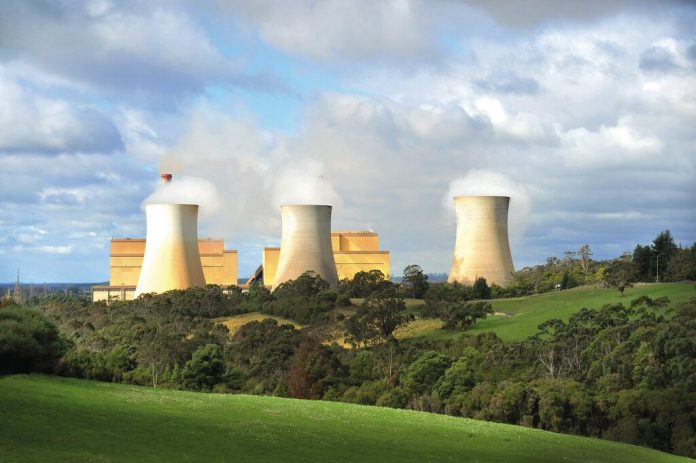PHILIP HOPKINS
By PHILIP HOPKINS
POLLUTION from the Latrobe Valley power stations has fallen over the past five years and massively over the past 10 years, according to the latest federal government National Pollutant Inventory data.
The specific NPI data, which based on coal-fired power stations, shows that in the Valley, PM2.5 pollution fell by 0.1 per cent from five years ago, but was down by 61.5 per cent over the past 10 years.
PM2.5 refers to tiny particulates in the air, 2.5 microns or less in size, that reduce visibility and cause the air to appear hazy when levels are elevated.
The Latrobe Valley power stations’ Victorian PM10 levels fell by 20.1 per cent over the past five years and 32.4 per cent over the past 10 years, NPI figures show.
PM10 refers to particulate matter 10 microns or less which are inhalable in the lungs and can induce health effects.
The NPI data is compiled by the federal Department of Climate Change, Energy, the Environment and Water.
Other pollutants at the power stations also declined in volume.
Emissions of sulphur dioxide (SO2) fell by 18.4 per cent over the past five years and by 17.8 per cent from 10 years ago.
Nitrogen oxides (NOx) fell by 29 per cent from five years ago and by 47.8 per cent over the past 10 years.
Mercury levels were down by 5.3 per cent from five years ago and by 31.9 per cent over the past decade.
The Valley broadly outperformed the rest of Australia’s power stations.
Nationally, PM2.5 emissions fell by 21 per cent over the past five years and nearly 46 per cent over the past decade, whereas PM10 emissions were online with last year (up 0.3 per cent) but were down 22 per cent and 27 per cent over the past five and 10 years respectively.
In other national results, NOx emissions were marginally lower (0.2 per cent), the fourth consecutive year that reductions have been reported, while O2 emissions were slightly higher (0.9 per cent) after three years of falling emissions.
The most notable change nationally was in mercury emissions, which were 10.9 per cent higher, after four years of falling levels.
Over the past five years, mercury emissions have fallen by 7.6 per cent and by nearly 17 per cent over the past 10 years.
An Australian Energy Council spokesperson said the trends over the past five years were very encouraging.
“We should expect to see the overall levels fall further over the next few years,” he said.
“A range of factors can result in noticeable shifts in emissions, particularly year-on-year, such as demand and availability of plant.
“Plant performance will also depend on how often they are dispatched by the market operator.
“The critical data remains the overall sector trend and that continued to be positive.
“The trendline continues to be positive and this can be expected to improve as the energy transition results in a change in the grid’s generation mix.”
The AEC is the peak industry body for electricity and downstream natural gas businesses in the competitive wholesale and retail energy markets.












